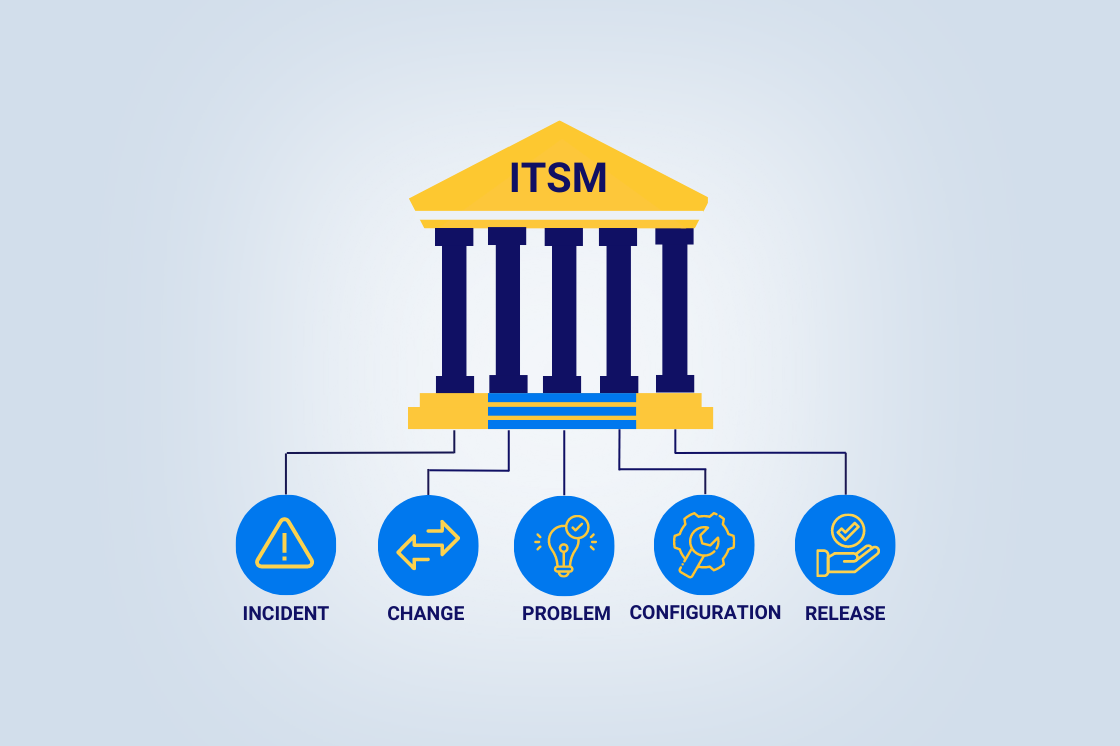The 5 Key ITSM Processes
In the same way that food, water, and shelter are essential to survival, there are 5 ITSM processes necessary for your Service Management foundation.
Do you recall learning about Maslow's "Hierarchy of Needs" model?
Maslow suggests that individuals must satisfy their basic needs before pursuing higher-level ones.
A similar concept holds in the world of IT service management.
A handful of processes must be in place and working well, as they are foundational to your IT Service Management program.
These ITSM processes include:
- Incident Management aims to quickly identify and restore services, ensuring minimal disruption to business operations. This process includes identifying, logging, classifying, and providing initial support for incidents and escalating incidents as required. Learn more about Incident Management Best Practices.
- Problem Management gets to the root cause of incidents to prevent their re-occurrence. This process involves analyzing trends, conducting thorough investigations, and implementing long-term solutions, which can help avert future incidents. Additionally, the team is responsible for developing temporary solutions or workarounds until the root cause is identified and resolved. Learn more about Problem Management Best Practices.
- Change Management is critical in mitigating the risk of implementing changes in a production environment. Change Management ensures these changes are planned, communicated, and implemented smoothly to minimize risks and avoid negative impacts on IT service delivery. Learn more about Change Management Best Practices.
- Release Management provides for the controlled testing, approval, and deployment of releases. Effective release management reduces the risk of failed deployments, improves service quality, and enhances the overall customer experience. Learn more about Release Management Best Practices.
- Configuration Management is the process that identifies and manages infrastructure components and, most importantly, their relationship to IT services. It includes maintaining a configuration management database (CMDB) that contains information about all configuration items, their relationships, and their attributes. Proper Configuration Management enables organizations to effectively manage changes, identify potential impacts, and troubleshoot issues more efficiently. Learn more about Configuration Management Best Practices.
Having trouble getting support for implementing ITSM best practices? Check out our blog on Building the Business case for ITSM Best Practices.

Here are some examples of how these five ITSM processes are foundational to service management success:
- Service Level Management is dependent on having effective Incident, Problem, and Change Management processes in place. Properly categorized incidents allow you to measure the impact on service levels. Getting to the root cause prevents reoccurrence and helps maintain service levels. Change Management reduces the introduction of incidents into the production environment.
- Disaster Recovery and Business Continuity Management depend on thoroughly understanding IT components and their relationships. That's where Configuration Management comes into play. If you are looking to measure the impact of a disaster on a service and recover that service, you need to know all its dependent IT components. The Configuration Management Database (CMDB) is where those relationships are maintained.
- A Strong Security Posture depends on all five processes. Release Management ensures that vulnerabilities are tested and addressed before deployment. Problem Management helps to determine the root cause of security incidents. Effective Change and Configuration Management helps maintain the security of your IT environment by ensuring that all system modifications adhere to your security policies.
ITSM processes deliver significant strategic and operational benefits to the business. Check our our post on The strategic Benefits of Implementing ITSM processes.
From an operational perspective nothing is more important these days than cyber security. Check out these posts on how ITSM improves your security posture:
Focus on the Basics
There are dozens of ITSM processes. When rolling out your Service Management program, you must focus on the basics first then evolve your program to meet more sophisticated requirements.
The Incident, Problem, Change, Release, and Configuration Management processes are essential building blocks for an ITSM program and form the necessary foundation before advancing to more complex processes.



